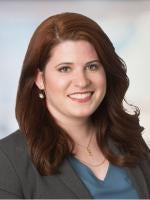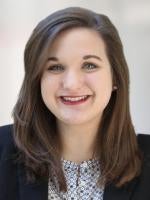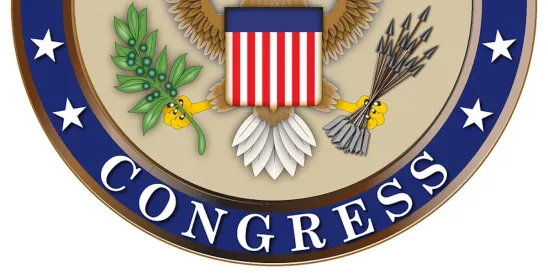As previously discussed, the SECURE 2.0 Act of 2022 (“SECURE 2.0”) was signed into law on December 29, 2022 as part of the 2023 Consolidated Appropriations Act, and included a myriad of required and optional plan design changes for retirement plan sponsors and employers (described in more detail here). After a closer read, several inadvertent errors were identified in the text of SECURE 2.0. In an open letter to the Secretary of the Treasury and the Commissioner of the IRS, dated May 23, 2023, Congress identified those errors and explained their intention to propose a correction bill.
On December 6, 2023, the House and Senate released a draft bipartisan SECURE 2.0 technical corrections bill. The proposed bill includes the following key corrections, along with additional minor fixes:
- Catch-up Contributions. One of the blockbuster inadvertent errors was an unintentional deletion of language permitting catch-up contributions. Section 603 of SECURE 2.0 provides that for participants who earned $145,000 or more in the preceding calendar year from the employer sponsoring the plan, all catch-up contributions must be made as Roth contributions. However, the text inadvertently omitted language which allowed catch-up contributions to be made in the first place. The technical corrections bill includes this omitted language, clarifying that catch-up contributions are permitted in 401(k), 403(b), and 457(b) plans for all catch-up eligible participants. (Reminder: the IRS granted a 2-year “administrative transition period” for the Roth catch-up requirement described in more detail here, which will now be required starting in 2026).
- RMD Age. SECURE 2.0 increased the required minimum distribution (“RMD”) age to 73 for participants who attain age 72 after December 31, 2022, and (causing some confusion) to age 75 for those participants who attain age 74 after December 31, 2032. It was later clarified that Congress intended to increase the RMD age to 75 for those that attain age 73(not 74) after December 31, 2032. As a result, the technical correction clarifies the age 75 increase applies to an individual who attains age 73 after December 31, 2032.
- Automatic Enrollment Provision Applied to Multiemployer Plans. SECURE 2.0 requires automatic enrollment starting in 2025 for 401(k) and 403(b) plans established on or after December 29, 2022, with an exemption for plans established before December 29, 2022. However, SECURE 2.0 provided that this exemption from the automatic enrollment requirement did not apply to an employer that adopts “a plan maintained by more than one employer” on or after December 29, 2022. While it is relatively clear that this language carved out multiple employer plans from this exemption, there was confusion as to how the exemption applied to multiemployer plans. The technical correction bill replaces “a plan maintained by more than one employer” with “a plan described in 413(c)”, which is the Code’s definition of a multiple employer plan. This clarification provides that the carve out does not apply to multiemployer plans, meaning that employers that newly participate in multiemployer 401(k) plans on or after December 29, 2022 will not be required to offer automatic enrollment, provided that the plan was established before such date.
- Automatic Deferral Increase for Non-Safe Harbor Plans. If subject to the new automatic enrollment requirements, beginning in 2025 a plan must automatically enroll participants to defer at least 3%, but not more than 10%, of compensation. Each year thereafter, the deferral rate must increase by one percent until it reaches 10%, but no more than 15%. SECURE 2.0 originally placed a 10% cap on the ceiling rate for non-safe harbor plans for plan years ending before January 1, 2025. However, the effective date for this cap aligned with the effective date of the automatic enrollment provisions which seemed to be an inadvertent error. The technical corrections bill changes the effective date for the 10% ceiling rate cap for non-safe harbor plans to plan years ending before January 1, 2026.
- Recouping Overpayments. SECURE 2.0 placed certain limitations on a plan’s recoupment of overpayments, including that a plan could not recoup an overpayment from a participant or beneficiary if the first overpayment was made more than three years before notice of the overpayment was provided to the participant or beneficiary. The current language provides this limitation would not apply in the case of the participant or beneficiary’s “fraud or misrepresentation.” However, later in the text of SECURE 2.0 it provides exceptions from the overpayment recoupment limitations for participants or beneficiaries who are “culpable.” The technical correction removes the “fraud or misrepresentation” exception, while leaving the “culpable” exception as is. This change helps clarify that the exception to these new overpayment recoupment rules is culpability, however, future guidance on what constitutes “culpability” would be helpful.
- Treatment of Student Loan Repayments as Elective Deferrals for Matching Contribution Purposes. SECURE 2.0 allows 401(k), 403(b), 457(b) and SIMPLE plans to treat an employee’s “qualifying student loan payments” as elective deferrals for purposes of receiving matching contributions. Generally, “qualifying student loan payments” are payments made by an employee in repayment of a qualified education loan incurred by the employee for qualified higher education expenses, provided such payments combined with any elective deferrals do not exceed the 402(g) elective deferral limit. The technical correction bill clarifies that the qualifying student loan payment may not exceed the 402(g) limit after the application of the catch-up contribution limit (if eligible).
- Retirement Savings Lost and Found.SECURE 2.0 requires the DOL to establish an online searchable database with information about retirement benefits. To create this database, plan administrators must provide information to the DOL about current and former participants. These new reporting requirements were applicable to plans subject to the vesting requirements of ERISA Section 203. The technical correction bill clarifies that a “plan” includes individual retirement accounts and deferred annuity contracts. The correction bill also clarifies that a former participant includes their beneficiaries and former beneficiaries.
- Starter 401(k) Plans. SECURE 2.0 allows an employer that does not sponsor a retirement plan to offer a deferral-only starter 401(k) plan (or a safe harbor 403(b) plan). The text of SECURE 2.0 limited the amount of deferrals an employee may make to such a plan to $6,000. The Senate Finance Committee’s summary of this SECURE 2.0 provision identified that this $6,000 limit was to align with the IRA limit (which was $6,000 for 2022), rather than remaining a static limit. The technical corrections bill replaces the $6,000 limit with reference to the IRA limit.
The technical correction bill includes other minor changes to SECURE 2.0. The respective committees from the House and Senate are soliciting comments on the proposed technical corrections bill; at this time, it is unclear when such legislation could pass.




 />i
/>i
